|

August 02, 2016
from
MessageToEagle Website
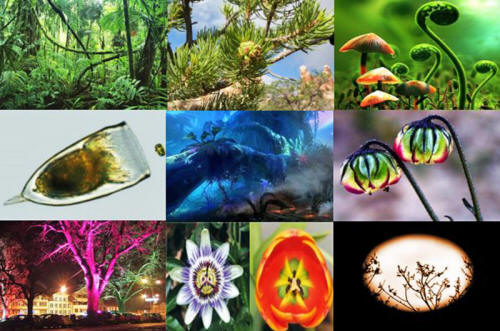
The remarkable and secret world of
plants is full of discoveries that astonish us.
Plants are much more complex and
intelligent that we have previously believed. Not only can they
sing, dance, avoid predators and much more, but they also contain
hidden maps and surprises that reveal they share many similar
properties with humans.
In this top list we present ten fascinating facts about plants -
prepare yourself for some true amazement!
1. Plants Can
Sing and Make Music
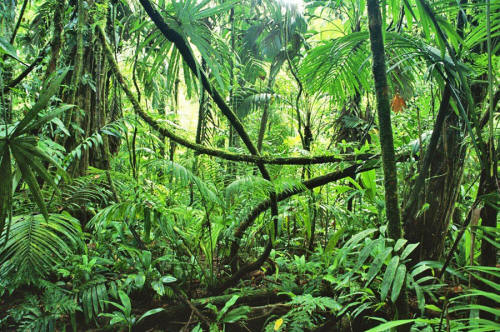
Plants are very much alive.
Have you ever heard the incredible music
of the plants? Plants can actually sing and compose music and
listening to it is truly beautiful and relaxing!
Ever since 1975, researchers at Damanhur, in northern Italy have
been experimenting with plants, trying to lean more about their
unique properties.
Researchers use devices which they have created to measure the
re-activity of the plants to their environment. The devices judge
the plants' capacity to learn and communicate.
Using a simple principle, the researchers used a variation of the
Wheatstone bridge, an electrical circuit used to measure an unknown
electrical resistance by balancing two legs of a bridge circuit, one
leg of which includes the unknown component.
Although there is currently little
scientific research conducted on this subject, one cannot deny that
listen to these beautiful plants is a joy for the soul. Listen for
yourself!
Read more...
2. Human Noise Has a
Negative Effect on Plants
Source
A growing body of research shows that birds and other animals change
their behavior in response to human noise, such as the din of
traffic or the hum of machinery.
But human clamor doesn't just affect animals.
Because many animals also pollinate plants or eat or disperse their
seeds, human noise can have ripple effects on plants, too, finds a
new study reported in the March 21, 2012, issue of the journal
Proceedings of the Royal Society B.
In cases where noise has ripple effects on long-lived plants like
trees, the consequences could last for decades, even after the
source of the noise goes away, says lead author Clinton Francis of
the National Science Foundation (NSF) National Evolutionary
Synthesis Center in Durham, North Carolina.
In previous studies, Francis and colleagues found that some animals
increase in numbers near noisy sites, while others decline.
But could animals' different responses to human noise have indirect
effects on plants, too?

Rattlesnake
Canyon Wildlife Area in New Mexico
was the site of the
noise research.
Credit: Bureau of Land Management
To find out, the researchers conducted a series of experiments from
2007 to 2010 in the Bureau of Land Management's Rattlesnake Canyon
Wildlife Area in northwestern New Mexico.
The region is home to thousands of natural gas wells, many of which
are coupled with noisy compressors for extracting the gas and
transporting it through pipelines.
The compressors roar and rumble day and night, every day of the
year.
The advantage of working in natural gas sites is they allow
scientists to study noise and its effects on wildlife without the
confounding factors in noisy areas like roadways or cities, such as
pollution from artificial light and chemicals, or collisions with
cars.
As part of their research, Francis and colleagues first conducted an
experiment using patches of artificial plants designed to mimic a
common red wildflower in the area called
scarlet gilia.
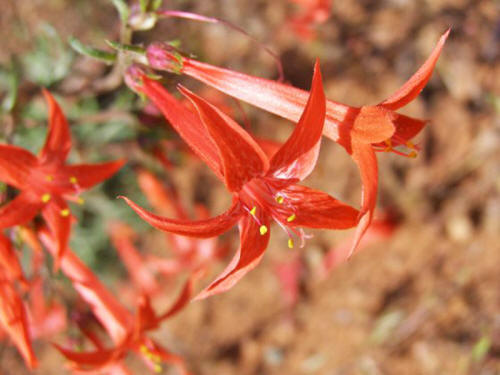
Scarlet gilia,
which attracts hummingbirds,
was a subject in one
"noise experiment."
Credit: National Park Service
Each patch consisted of five artificial plants with three "flowers"
each-microcentrifuge tubes wrapped in red electrical tape - which
were filled with a fixed amount of sugar water for nectar.
To help in estimating pollen transfer within and between the
patches, the researchers also dusted the flowers of one plant per
patch with artificial pollen, using a different color for each
patch.
Din levels at noisy patches were similar to that of a highway heard
from 500 meters away, Francis said.
When the researchers compared the number of pollinator visits at
noisy and quiet sites, they found that one bird species in
particular - the
black-chinned hummingbird - made five times more
visits to noisy sites than quiet ones.
"Black-chinned hummingbirds may prefer noisy sites because another
bird species that preys on their nestlings, the western scrub jay,
tends to avoid those areas," Francis said.
Pollen transfer was also more common in the noisy sites.
If more hummingbird visits and greater
pollen transfer translate to higher seed production for the plants,
the results suggest that,
"hummingbird-pollinated plants such as
scarlet gilia may indirectly benefit from noise," Francis said.
Another set of experiments revealed that noise may indirectly
benefit some plants, but is bad news for others.
In a second series of experiments at the same study site, the
researchers set out to discover what noise might mean for tree seeds
and seedlings, using one of the dominant trees in the area - the
piñon pine.
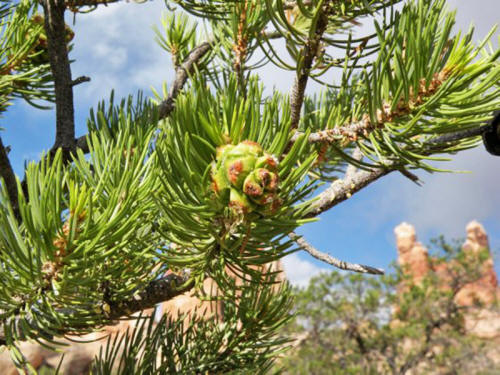
Human noise
affects plants such as piñon pine,
whose seed-dispersers
avoid the clamor.
Credit: Clinton Francis
Piñon pine seeds that aren’t plucked from their cones fall to the
ground and are eaten by birds and other animals.
To find out if noise affected the number of piñon pine seeds that
animals ate, the researchers scattered piñon pine seeds beneath 120
piñon pine trees in noisy and quiet sites, using a motion-triggered
camera to figure out what animals took the seeds.
After three days, several animals were spotted feeding on the seeds,
including mice, chipmunks, squirrels, birds and rabbits.
But two animals in particular differed between quiet and noisy
sites-mice, which preferred noisy sites, and western scrub jays,
which avoided them altogether.
Piñon pine seeds that are eaten by mice don’t survive the passage
through the animal’s gut, Francis said, so the boost in mouse
populations near noisy sites could be bad news for pine seedlings in
those areas.
In contrast, a single western scrub jay may take hundreds to
thousands of seeds, only to hide them in the soil to eat later in
the year.
The seeds they fail to relocate will eventually germinate, so the
preference of western scrub jays for quiet areas means that piñon
pines in those areas are likely to benefit.
In keeping with their seed results, the researchers counted the
number of piñon pine seedlings and found that they were four times
as abundant in quiet sites compared with noisy ones.
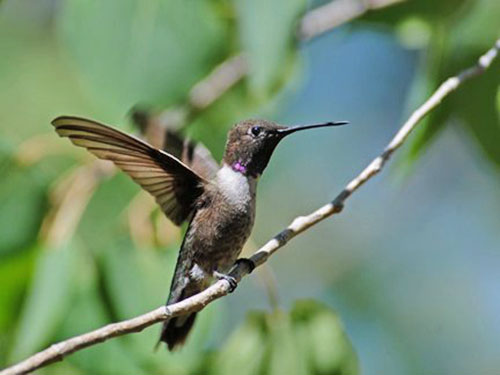
Black-chinned hummingbirds prefer noisy nesting sites;
other birds stay
away.
Credit: National Park Service
It may take decades for a piñon pine to grow from a seedling into a
full-grown tree, Francis said, so the consequences of noise may last
longer than scientists thought.
"Fewer seedlings in noisy areas
might eventually mean fewer mature trees, but because piñon
pines are so slow-growing the shift could have gone undetected
for years," he said.
"Fewer piñon pine trees would mean less critical habitat for the
hundreds of species that depend on them for survival."
3. Plants May
Be Deaf but They Can Feel, See, Smell and Remember
Source
Plants have more in common with humans than most people think.
They may be deaf, but they can feel, see, smell and remember,
according to plant biologist Daniel Chamovitz, and unlocking the
secrets of plant genetics could lead to breakthroughs in cancer
research and food security
Increasingly, scientists are uncovering surprising biological
connections between humans and other forms of life.
Now a Tel Aviv University researcher has revealed that plant and
human biology is much closer than has ever been understood - and the
study of these similarities could uncover the biological basis of
diseases like cancer as well as other "animal" behaviors.
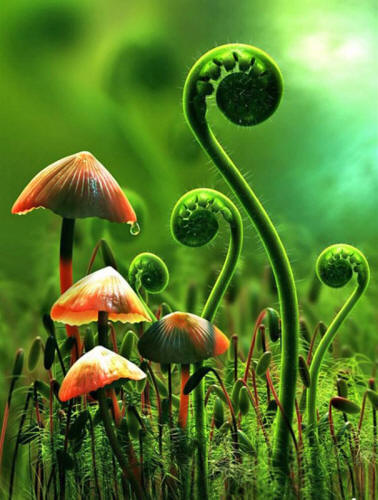
Eugenia
polyantha Wight
In his new book What a Plant Knows (Farrar, Straus and Giroux) and
his articles in Scientific American, Prof. Daniel Chamovitz,
Director of TAU's Manna Center for Plant Biosciences, says that the
discovery of similarities between plants and humans is making an
impact in the scientific community.
Like humans, Prof. Chamovitz says, plants also have "senses" such as
sight, smell, touch, and taste.
Ultimately, he adds, if we share so much of our genetic makeup with
plants, we have to reconsider what characterizes us as human.
These findings could prompt scientists to rethink what they know
about biology, says Prof. Chamovitz, pointing out that plants serve
as an excellent model for experiments on a cellular level.
This research is also crucial to food security, he adds, noting that
knowledge about plant genetics and how plants sense and respond to
their environment is central to ensuring a sufficient food supply
for the growing population - one of the main goals of the Manna
Center.
One of the most intriguing discoveries of recent years is that a
group of plant genes used to regulate responses to light is also
part of the human DNA. These affect responses like the circadian
rhythm, the immune system, and cell division.
A plant geneticist, Prof. Chamovitz was researching the way plants
react to light when he discovered an group of genes that were
responsible for a plant "knowing" whether it was in the light or in
the dark.
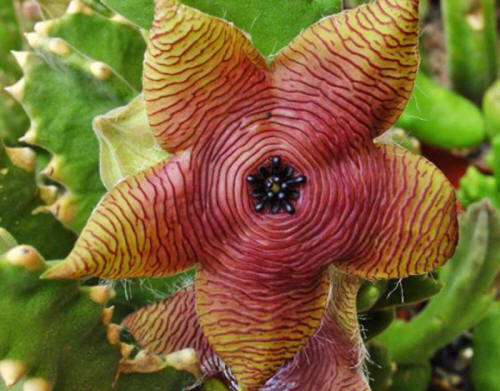
Stapelia
clavicorona.
Credits:
PlantZAfrica.com
He first believed that these genes were specific to plant life, but
was surprised to later identify the same group of genes in humans
and animals.
"The same group of proteins that
plants use to decide if they are in the light or dark is also
used by animals and humans," Prof. Chamovitz says.
"For example, these proteins control
two seemingly separate processes.
-
First, they control the
circadian rhythm, the biological clock that helps our
bodies keep a 24 hour schedule.
-
Second, they control the
cell cycle - which means we can learn more about
mutations in these genes that lead to cancer."
In experiments with fruit flies who had
a mutated version of one of these genes, Prof. Chamovitz and his
fellow researchers observed that the flies not only developed a fly
form of leukemia, but also that their circadian rhythm was
disrupted, leading to a condition somewhat like permanent jet-lag.
Plants use light as a behavioral signal, letting them know when to
open their leaves to gather necessary nutrients.
This response to light can be viewed as
a rudimentary form of sight, contends Prof. Chamovitz, noting that
the plants "see" light signals, including color, direction, and
intensity, then integrate this information and decide on a response.
And plants do all this without the
benefit of a nervous system.
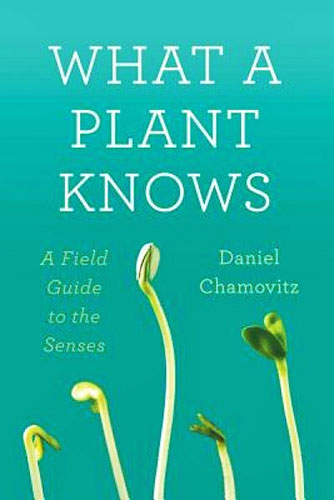
-
How does a Venus flytrap know when to snap shut?
-
Can it feel an
insect's tiny, spindly legs?
-
And how do cherry blossoms know when to
bloom?
-
Can they remember the weather?
For centuries we have marveled at plant diversity and form - from
Charles Darwin's early fascination with stems to Seymour Krelborn's
distorted doting in Little Shop of Horrors.
But now, in What a Plant Knows, the renowned biologist
Daniel
Chamovitz presents an intriguing and scrupulous look at how
plants themselves experience the world - from the colors they see to
the schedules they keep.
Highlighting the latest research in
genetics and more, he takes us into the inner lives of plants and
draws parallels with the human senses to reveal that we have much
more in common with sunflowers and oak trees than we may realize.
Chamovitz shows how plants know up from
down, how they know when a neighbor has been infested by a group of
hungry beetles, and whether they appreciate the Led Zeppelin you've
been playing for them or if they're more partial to the melodic
riffs of Bach.
Covering touch, sound, smell, sight, and even memory, Chamovitz
encourages us to consider whether plants might even be aware.
A rare inside look at what life
is really like for the grass we walk on, the flowers we sniff,
and the trees we climb, What a Plant Knows offers us a greater
understanding of botany and science and our place in nature.
And that's not the limit of plant "senses."
Plants also demonstrate
smell - a ripe fruit releases a "ripening pheromone" in the air,
which is detected by unripe fruit and signals them to follow suit -
as well as the ability to feel and taste.
To some degree, plants also have
different forms of "memory," allowing them to encode, store, and
retrieve information.
Beyond the genes that regulate responses to light, plants and humans
share a bevy of other proteins and genes - for example, the genes
that cause cystic fibrosis and breast cancer.
Plants might not come down with these diseases, but the biological
basis is the same, says Prof. Chamovitz. Because of this, plants are
an excellent first stop when looking for a biological model, and
could replace or at least enhance animal models for human disease in
some types of research.
He is working alongside Prof. Yossi Shiloh, Israel Prize
winner and incumbent of the David and Inez Myers Chair of Cancer
Genetics at Tel Aviv University's Sackler Faculty of Medicine, to
understand how the genes Chamovitz discovered function in protecting
human cells from radiation.
4. Plants Can
Sense Danger and They Know How to Avoid Predators
Source
First observation of predator avoidance behavior by phytoplankton
was made by researchers at the University of Rhode Island's Graduate
School of Oceanography.
While studying microscopic marine plants and their behavior in
confrontation to the predatory zooplankton Favella sp, researchers
noticed that a species of phytoplankton, a microscopic marine plant
known as
Heterosigma akashiwo can handle dangerous situations by
avoiding predators.
"The phytoplankton can clearly sense
the predator is there. They flee even from the chemical scent of
the predator but are most agitated when sensing a feeding
predator," said Susanne Menden-Deuer at the University of Rhode
Island, co-author of the study.
"It has been well observed that phytoplankton can control their
movements in the water and move toward light and nutrients,"
Menden-Deuer said.
"What hasn't been known is that they
respond to predators by swimming away from them. We don't know
of any other plants that do this."
While imaging 3-dimensional
predator-prey interactions, the researchers noted that the
phytoplankton Heterosigma akashiwo swam differently in the presence
of predators, and groups of them shifted their distribution away
from the predators.
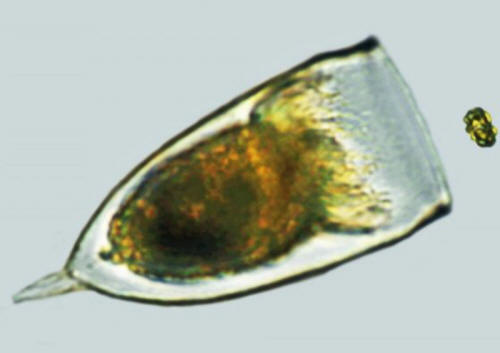
The
zooplankton predator Favella sp. (left)
and the fleeing
phytoplankton Heterosigma.
(University of Rhode
Island)
Moreover, researchers also found that the phytoplankton flee when in
water that had previously contained the predators. They found only a
minimal effect when the phytoplankton was exposed to predators that
do not feed on phytoplankton.
When the scientists provided the phytoplankton with a refuge to
avoid the predator - an area of low salinity water that the
predators cannot tolerate - the phytoplankton moved to the refuge.
The important question these observations raise, according to
Susanne Menden-Deuer, is how these interactions affect the
survival of the prey species.
Measuring survival in the same experiments, the researchers found
that fleeing helps the alga survive. Given a chance, the predators
will eat all of the phytoplankton in one day if the algae have no
safe place in which to escape, but they double every 48 hours if
they have a refuge available to flee from predators.
Fleeing makes the difference between
life and death for this species, said Menden-Deuer.
"One of the puzzling things about
some phytoplankton blooms is that they suddenly appear," she
said.
"Growth and nutrient availability don't always explain the
formation of blooms. Our observation of algal fleeing from
predators is another mechanism for how blooms could form.
Amazingly, looking at individual microscopic behaviors can help
to explain a macroscopic phenomenon."
The researchers say there is no way of
knowing how common this behavior is or how many other species of
phytoplankton also flee from predators, since this is the first
observation of such a behavior.
"If it is common among
phytoplankton, then it would be a very important process,"
Menden-Deuer said. "I wouldn't be surprised if other species had
that capacity. It would be very beneficial to them."
The discovery (Predator-Induced
Fleeing Behaviors in Phytoplankton - A New Mechanism for Harmful
Algal Bloom Formation?) was published in the
September 28 issue of the journal PLOS ONE.
5. Plants
are
Capable of Making Complex Decisions
Source
Are plants more intelligent than we assumed? This recent study shows
that plants possess surprising abilities.
Plants are also able to make complex decisions, say scientists from
the Helmholtz Center for Environmental Research (UFZ) and the
University of Göttingen.
Based on their investigations on Barberry (Berberis vulgaris), which
is able to abort its own seeds to prevent parasite infestation,
researchers deliver now the first ecological evidence of complex
behavior in plants.
The Barberry (Berberis vulgaris) species has a structural memory, is
able to differentiate between inner and outer conditions as well as
anticipate future risks, according to the study.
When scientists examined the seeds of the Barberry more closely,
they made a surprising discovery.
"The seeds of the infested fruits
are not always aborted, but rather it depends on how many seeds
there are in the berries", explains Dr. Katrin M. Meyer, who
analyzed the data at the UFZ and currently works at the
University of Goettingen.
If the infested fruit contains two
seeds, then in 75 per cent of cases, the plants will abort the
infested seeds, in order to save the second intact seed.
If however the infested fruit only contains one seed, then the plant
will only abort the infested seed in 5 per cent of cases.
"If the
Barberry aborts a fruit with only one infested seed, then the entire
fruit would be lost. Instead it appears to 'speculate' that the
larva could die naturally, which is a possibility.
Slight chances
are better than none at all", explains Dr. Hans-Hermann Thulke from
the UFZ.
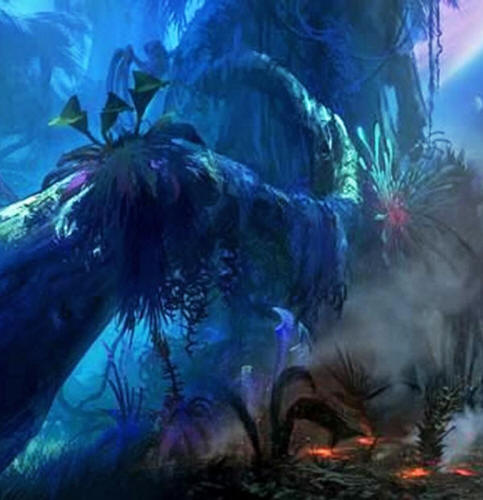
Plants are very much
alive
and their abilities
keep surprising us.
"This anticipative behavior, whereby anticipated losses and
outer conditions are weighed up, very much surprised us. The
message of our study is therefore that plant intelligence is
entering the realms of ecological possibility."
But how does the Barberry know what is
in store for it after the tephritid fruit fly has punctured a berry?
It is still unclear as to how the plant
processes information and how this complex behavior was able to
develop over the course of evolution. We have previously seen that
plants are much more alive than most people think.
Not only do they dislike human noise but they also posses the
capacity to learn and communicate.
Perhaps even more astonishing is that plants can also make
incredible music.
6. Talk
to
Your Plants and You Help Them Grow Better
Source
Does talking to your plants make them grow better? Researchers say:
Yes!
Having a neighborly chat improves seed germination, finds research
in BioMed Central's open access journal BMC Ecology. Even when other
known means of communication, such as contact, chemical and
light-mediated signals, are blocked, chilli seeds grow better when
grown with
basil plants.
This suggests that plants are talking via nanomechanical vibrations.
Monica Gagliano and Michael Renton from the University of Western
Australia attempted to grow chilli seeds (Capsicum annuum) in the
presence or absence of other chilli plants, or basil (Ocimum
basilicum).
In the absence of a neighboring plant,
germination rates were very low, but when the plants were able to
openly communicate with the seeds more seedlings grew.
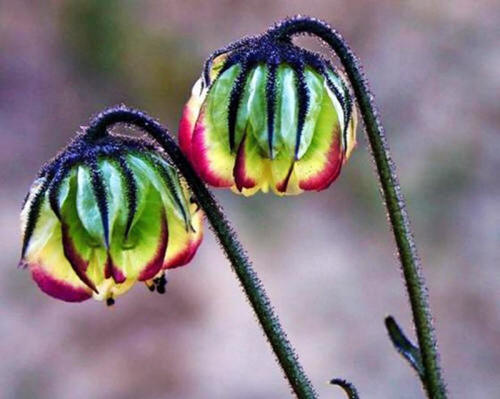
However when the seeds were separated from the basil plants with
black plastic, so that they could not be influenced by either light
or chemical signals, they germinated as though they could still
communicate with the basil.
A partial response was seen for fully grown chilli plants blocked
from known communication with the seeds.
"Our results show that plants are
able to positively influence growth of seeds by some as yet
unknown mechanism. Bad neighbors, such as fennel, prevent chilli
seed germination in the same way," Dr Gagliano explained.
"We believe that the answer may involve acoustic signals
generated using nanomechanical oscillations from inside the cell
which allow rapid communication between nearby plants."
7. Using
Glowing Plants and Trees Can Be Used as an Energy Source
Source
These questions have occupied a group of scientists who have come up
with an ingenious idea how to cut electricity costs and reduce light
pollution.
Walking down the street a late evening you might actually find
yourself surrounded by amazingly beautiful glowing trees and pants,
instead of ordinary street lamps.
Researchers say that after proper optimization, threes and plants
can be used to construct biological street lightning and serve as an
efficient energy source.
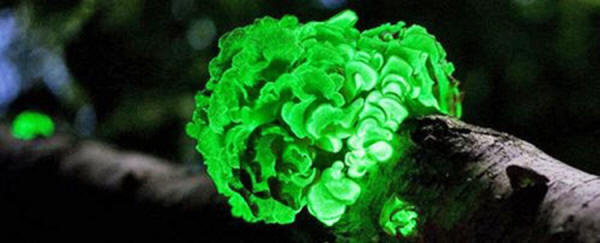
Glowing plants
can soon be used as a source of light.
A group of researchers in Taiwan led by Yen Hsun Su and colleagues
at Academia Sinica in Taipei and the National Cheng Kung University
in Taiwan have successfully synthesized gold
nanoparticles and
implemented them into leaves of
Bacopa caroliniana plant to induce
bioluminescence in them.
This process turned the leaves into bio-light-emitting diodes.
Nanoparticles are particles with a diameter of about 10 nanometers (a nanometer is a billionth of a meter).
Bacopa caroliania is a perennial aquatic or semi-aquatic herb
commonly used as aquarium plant.
"The color of the leaves varies in
proportion to the amount of light, turning bronze to almost red
when exposed to high light levels."
"The green pigment in leaves, chlorophyll, is bioluminescent
when exposed to high wavelength (400 nanometers (nm)) ultra
violet excitation, but the wavelength is much shorter for the
photoluminescence of gold nanoparticles, and they emit light at
400 nm.
The light is localized at a nanoscale and the nanoparticles made
by the Taiwan team suppresses emission blinking, which is a
problem already known in gold nanoparticles.
Using their sea-urchin-shaped
nanoparticles (dubbed nano-sea-urchins or NSUs), Su was able to
excite chlorophyll in the leaves to emit red light."

You may soon be surrounded by glowing trees instead of ordinary
street lamps.
During the experiments scientists also discovered a relationship
between the size of the gold particle and the intensity of the
bioluminescence. The larger particle, the more the leaf was shining.
Yen Hsun Su and his colleagues are now trying to apply the
same technique to other plant molecules.
They are also determined to improve the efficiency of the process.
Although the idea of using plants as sources of light may appear to
be pure science fiction, Su and his team have successfully proved
the idea is based on science and not fiction.
Su believes that bio-light-emitting diodes might eventually be used
to make trees lining roads luminescent at night. Since the light
causes the chloroplast to conduct photosynthesis no energy source is
needed and the plant will absorb CO2 for the
process, which does not normally occur at night.
Plants and trees which posses the ability to glow in the dark may
provide us with new energy sources in the near future.
8. There Is
a
Hidden Map Inside Plants
Source
There is no doubt plants are special in a number of ways. We have
previously seen plants that can make music and sing.
Plants are very much alive. Not only do they dislike human noise but
they also posses the capacity to learn and communicate.
Researchers have also discovered that
plants and humans have more in common than previously thought.
Plants possess a number of amazing properties and they can
"behave" similar
to us.
Another astonishing property is that
plants possess intelligence. They can sense danger and know exactly
how to avoid
predators.
Even more amazing is the fact that
although plants are actually deaf, they can feel,
see, smell and remember. Not to mention that they are
also altruistic!
Recently researcher made another
surprising discovery. A group of scientists from the John Innes
Centre and University of East Anglia, UK asked themselves why rose
petals have rounded ends while their leaves are more pointed and
they noticed something unusual. Their study revealed that the shape
of petals is controlled by a hidden map located within the plant's
growing buds.
Leaves and petals perform different
functions related to their shape.
Leaves acquire sugars for a plant via
photosynthesis, which can then be transported throughout the plant.
Petals develop later in the life cycle and help attract pollinators.
In earlier work, this team had
discovered that leaves in the plant
Arabidopsis contain a hidden map
that orients growth in a pattern that converges towards the tip of
the bud, giving leaves their characteristic pointed tips.
In the new study, the researchers
discover that Arabidopsis petals contain a similar, hidden map that
orients growth in the flower's bud.
However, the pattern of growth is
different to that in leaves - in the petal growth is oriented
towards the edge giving a more rounded shape - accounting for the
different shapes of leaves and petals.
The researchers discovered that
molecules called
PIN proteins are involved in this oriented growth,
which are located towards the ends of each cell.
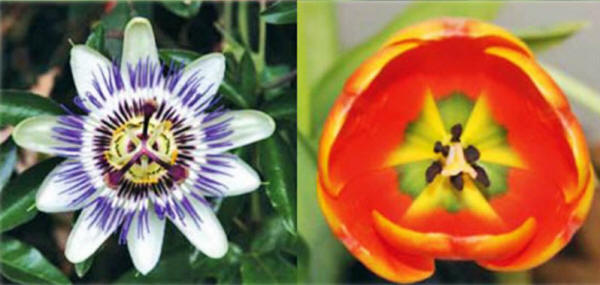
There is a hidden map
inside flowers…
"The discovery of these hidden
polarity maps was a real surprise and provides a simple
explanation for how different shapes can be generated," said
Professor Enrico Coen, senior author of the study.
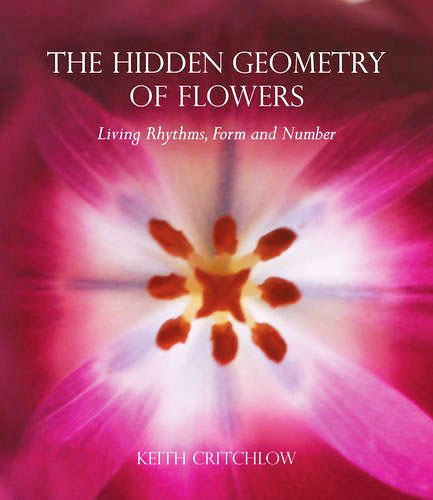
Can
we imagine a world without flowers?
Flowers are beautiful,
offering us delight in their color, fragrance and form, as well
as their medicinal benefits. Flowers also speak to us in the
language of the plant form itself, as cultural symbols in
different societies, and at the highest levels of inspiration.
In this beautiful and original book, renowned
thinker and geometrist Keith Critchlow has chosen to focus on an
aspect of flowers that has received perhaps the least attention.
This is the flower as teacher of symmetry and geometry (the 'eternal verities', as Plato called them).
In this sense, he says, flowers can be treated as
sources of remembering - a way of recalling our own wholeness,
as well as awakening our inner power of recognition and
consciousness.
What is evident in the geometry of the face of a
flower can remind us of the geometry that underlies all
existence.
Working from his own flower photographs and with
every geometric pattern hand-drawn, the author reviews the role
of flowers within the perspective of our relationship with the
natural world.
His illuminating study is an attempt to re-engage
the human spirit in its intimate relation with all nature.
The team of researchers confirmed their
ideas by using computer simulations to test which maps could predict
the correct petal shape.
They then confirmed experimentally that
PIN proteins located to the right sites to be involved in oriented
growth, and identified that another protein, called JAGGED, is
involved in promoting growth towards the edge of petals and in
establishing the hidden map that determines petal growth and shape.
Unlike animal cells, plant cells are
unable to move and migrate to form structures of a particular shape,
and so these findings help to explain how plants create differently
shaped organs - by controlling rates and orientations of cell
growth.
From an evolutionary perspective, this
system creates the flexibility needed for plant organs to adapt to
their environment and to develop different functions.
Isn't nature amazing?
9. Plants
Perform Accurate and Very Sophisticated Arithmetic Calculation to
Prevent Starvation at Night
Source
Plants perform accurate arithmetic division in order to prevent
starvation at night, a new study shows.
The calculation allows them to use up
their starch reserves at a constant rate so that they run out almost
precisely at dawn.
"This is the first concrete example
in a fundamental biological process of such a sophisticated
arithmetic calculation." said mathematical modeler Professor
Martin Howard from the John
Innes Centre.
Plants feed themselves during the day by
using energy from the sun to convert carbon dioxide into sugars and
starch. Once the sun has set, they must depend on a store of starch
to prevent starvation.
The John Innes Centre scientists show
that to adjust their starch consumption so precisely they must be
performing a mathematical calculation - arithmetic division.
"The capacity to perform arithmetic
calculation is vital for plant growth and productivity," said
metabolic biologist Professor Alison Smith.
"Understanding how plants continue
to grow in the dark could help unlock new ways to boost crop
yield."
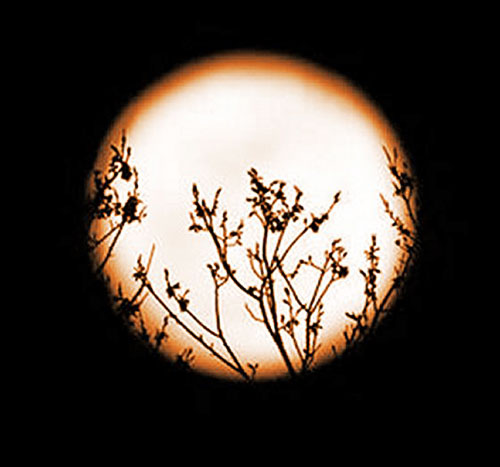
During the night, mechanisms inside the
leaf measure the size of the starch store and estimate the length of
time until dawn.
Information about time comes from an
internal clock, similar to our own body clock.
The size of the starch store is then
divided by the length of time until dawn to set the correct rate of
starch consumption, so that, by dawn, around 95% of starch is used
up.
"The calculations are precise so
that plants prevent starvation but also make the most efficient
use of their food," said Professor Smith.
"If the starch store is used too
fast, plants will starve and stop growing during the night. If
the store is used too slowly, some of it will be wasted."
Research (Arabidopsis
Plants Perform Arithmetic Division to Prevent Starvation at Night) is published in the open access
journal eLife.
10. Ancient
Native Tobacco Plant May Help Grow Food in Space
Source
QUT scientists have discovered the gene that will open the door for
space-based food production.
Professor Peter Waterhouse, a plant geneticist at QUT, discovered
the gene in the ancient Australian native tobacco plant
Nicotiana
benthamiana, known as Pitjuri to indigenous Aboriginal tribes.
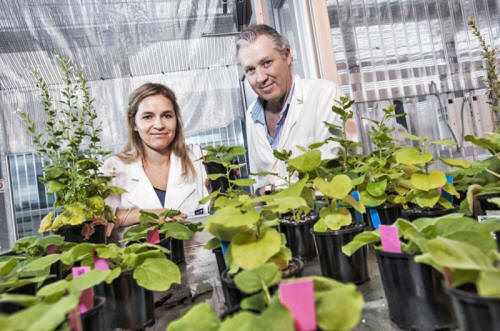
QUT
researchers Dr Julia Bally and Professor Peter Waterhouse
have discovered a
plant with huge genome properties
that can have the
potential to be the
'laboratory rat' of
the molecular plant world.
This could open the
door for such things
as space-based food
production
Credit: Erika Fish
Professor Waterhouse made the discovery while tracing the history of
the Pitjuri plant, which for decades has been used by geneticists as
a model plant upon which to test viruses and vaccines.
"This plant is the 'laboratory rat'
of the molecular plant world," he said, "we think of it as a
magical plant with amazing properties.
"We now know that in 1939 its seeds were sent by an Australian
scientist to a scientist in America and have been passed from
lab to lab all over the world.
"By sequencing its genome and looking through historical records
we have been able to determine that the original plant came from
the Granites area near the Western Australia and Northern
Territory border, close to where Wolf Creek was filmed.
"We know, through using a molecular clock and fossil records,
that this particular plant has survived in its current form in
the wild for around 750,000 years."
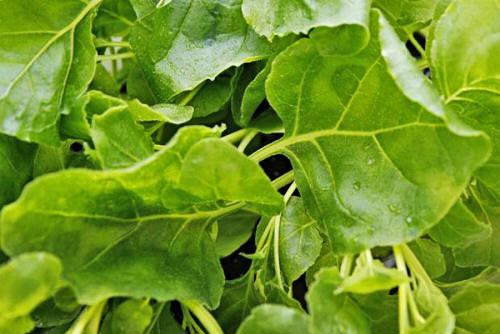
Pitjuri plant has survived in its current form in the wild
for around 750,000
years, says Professor Peter Waterhouse.
Photo: Reuters
Lead researcher Dr Julia Bally said determining the exact
species had led researchers on a quest to find out how the plant
managed to survive in the wild for such a long period of time.
"What we found may have a big impact
on future plant biotechnology research," Dr Bally said.
"We have discovered that it is the plant equivalent of the nude
mouse used in medical research.
"The plant has lost its "immune system" and has done that to
focus its energies on being able to germinate and grow quickly,
rapidly flower, and set seed after even a small amount of
rainfall.
"Its focus is on creating small flowers but large seeds and on
getting these seeds back into the soil in time for the next
rain.
"The plant has worked out how to fight drought - its number one
predator - in order to survive through generations."
Professor Waterhouse, a molecular
geneticist with QUT's
Centre for
Tropical Crops and Biocommodities, said scientists could use
this discovery to investigate other niche or sterile growing
environments where plants were protected from disease - and space
was an intriguing option.
"So the recent film
The Martian, which involved an astronaut stranded on Mars
growing potatoes while living in an artificial habitat, had a
bit more science fact than fiction than people might think," he
said.
Professor Waterhouse said the team's
findings also have implications for future genetic research back
here on Earth.
"Scientists can now know how to turn
other species into "nude mice" for research purposes. So just as
nude mice can be really good models for cancer research, "nude"
versions of crop plants could also speed up agricultural
research," he said.
Professor Waterhouse said the fact that
the N. benthamiana variety from central Australia had doubled its
seed size also opened the door for investigations into how N.
benthamiana could be used commercially as a biofactory, as seeds
were an excellent place in which to make antibodies for
pharmaceutical use.
|




















